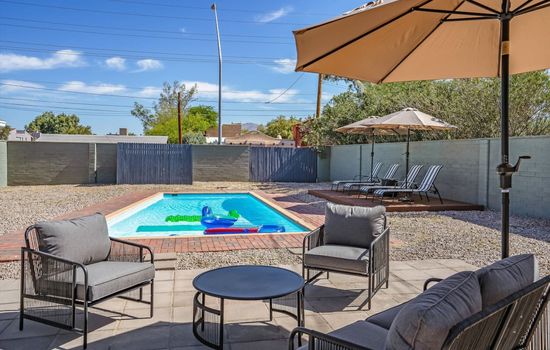The visitor center at Saguaro National Park is open daily from 9:00 AM to 5:00 PM from October 1st to May 31st, and from 8:00 AM to 4:00 PM from June 1st to September 30th. It is closed on Christmas Day.
The entrance fee at Saguaro National Park is $20 per vehicle, $15 per motorcycle, and $10 per person for those entering on foot or by bicycle. This fee is valid for 7 days and covers both the Tucson Mountain and Rincon Mountain districts. Children under 16 enter free. Annual and interagency passes are also available.
By Car: From Tucson, take East Broadway or East Speedway Boulevard to park entrances. By Public Transportation: Sun Tran bus to the park boundary, then taxi or rideshare. Guided Tours: Local operators offer full-day tours with transport and expert guides.
Parking for cars and motorcycles is available at visitor centers and trail entrances, but limited. RV parking is only at the Tucson Mountain District visitor center, not on scenic loop drives or in the Rincon Mountain District. No overnight RV parking. Parking is free, but a $25 entrance fee applies.
Accessibility & permits
Emergency
- Cell service availability:Partial
Information not accurate?
Help us improve by making a suggestion.
Saguaro National Park, located in Tucson, Arizona, is a celebration of the iconic saguaro cactus, a symbol of the American Southwest. Divided into two districts—Saguaro West (Tucson Mountain District) and Saguaro East (Rincon Mountain District)—the park offers hiking trails like Valley View Overlook and Cactus Forest Loop Drive. Wildlife enthusiasts can spot roadrunners, coyotes, and Gila monsters. Stop by Red Hills Visitor Center (West) or Rincon Visitor Center (East) for maps and exhibits. With RV camping options nearby and accommodations in Tucson—including Lake.com vacation homes—Saguaro National Park is perfect for day trips or extended stays.
- Area (mi²)
- 143
- Annual visitors
- 1 000 000
- Established year
- 1933
Top 3 Facts about Saguaro National Park
The park contains 523 known archeological sites, spanning over 8,000 years of human occupation, highlighting a rich and ancient human presence in the area.
Designated an International Dark Sky Park, with over 300 clear nights per year for unparalleled stargazing opportunities.
Provides habitat for 200+ bird species, 60 mammal species, and numerous reptiles and amphibians, including desert bighorn sheep.
Family programs
- Junior Ranger
- Ranger-led Tours
- Workshops & Hands-on Activities
- Living History & Cultural Demos
- Scavenger Hunts
- Family Camping & Overnight
- Youth Conservation
- Scouting Partnerships
- Virtual Junior Activities
- Arts & Crafts
Travel Tips
Plan Ahead
Research park attractions, check weather and visitor center hours, and purchase entrance pass in advance.
Pack Appropriately
Bring plenty of water, snacks, a map/guidebook, first-aid kit, hiking gear, a charged cell phone, and a flashlight/headlamp.
Respect Wildlife
Keep a safe distance from wildlife, never feed or approach animals, and watch for rattlesnakes and scorpions.
Stay Informed
Check the NPS website or visitor centers for current alerts, trail conditions, and road/closure updates.
Seasons
March–May: mild weather, wildflowers in bloom, ideal for hiking and wildlife viewing.
June–August: warm temperatures; best activities early morning/late afternoon; perfect for stargazing under clear desert skies.
September–November: pleasant temps, fewer crowds, saguaro fruit season, and excellent birdwatching.
December–February: cooler days, clear skies; ideal for hiking and desert photography; some higher-elevation trails more accessible.
Information not accurate?
Help us improve by making a suggestion.
Where to stay
Frequently Asked Questions
Ready to dive into what Saguaro National Park has to offer? Let’s tackle some of the burning questions you might have as you plan your visit!
-
To visit Saguaro National Park, you should stay in Tucson, Arizona, as it is the closest city with a variety of hotels and amenities. Tucson is about 16-17 miles from the park, making it a convenient base for your trip.
-
The Desert Discovery Nature Trail is a great option for kids, as it is a very easy, 0.3-mile paved loop trail with only 16 feet of elevation change and interpretive signs about desert plants and animals. It is located on the west side of the park and is accessible for those with extra needs. This trail is suitable for young kids with short legs and attention spans.
-
Dogs are not allowed on the main trails, but they can be taken on certain roadways, picnic areas, and some paved trails. They must always be on a 6-foot leash. Specific dog-friendly areas include Mica View Road, the Desert Discovery Nature Trail, and the Bajada Loop Drive.
-
There is a separate fee for motorcycles, which is $20 per motorcycle, valid for 1-7 days from the date of purchase. This fee is different from the $25 vehicle entrance fee. Motorcycles are not included in the vehicle entrance pass.
-
The most iconic sight is the massive petrified Sequoia tree stumps, including the Big Stump, which is up to 14 feet wide and features broken saw blades from a failed attempt to cut it for the 1893 Chicago World’s Fair. These stumps are remnants of an ancient redwood forest that dates back 34 million years.





